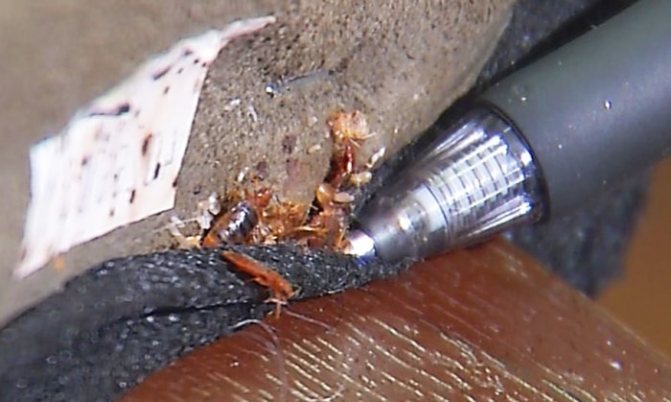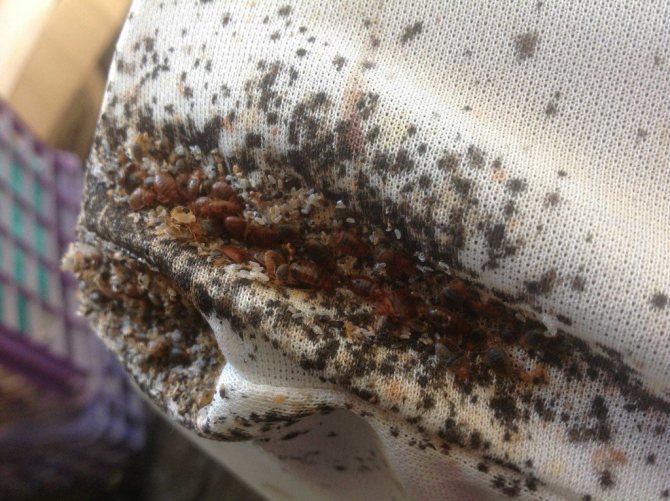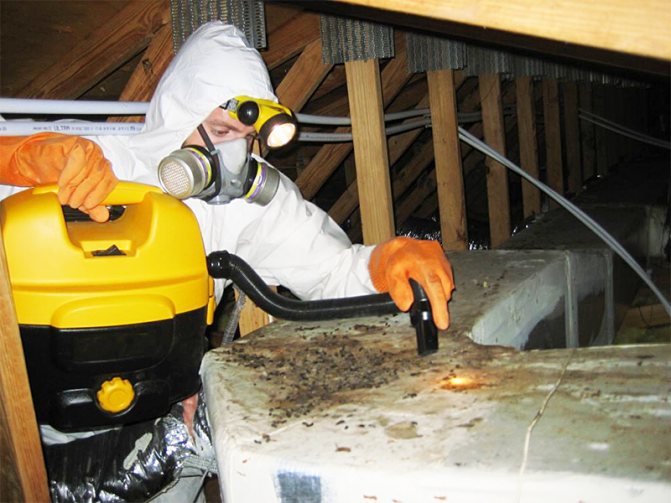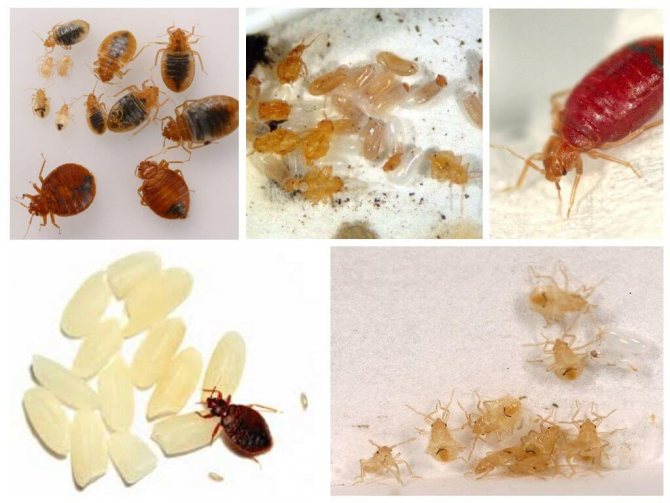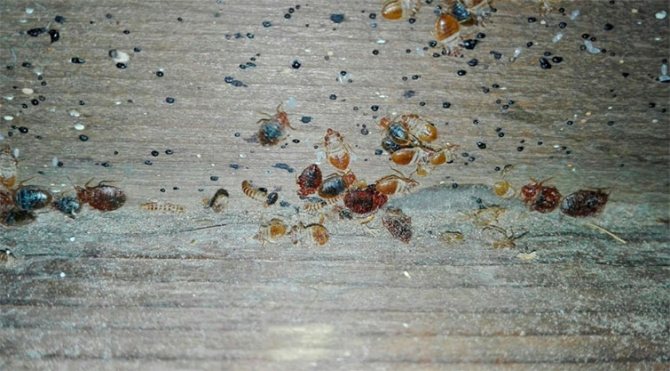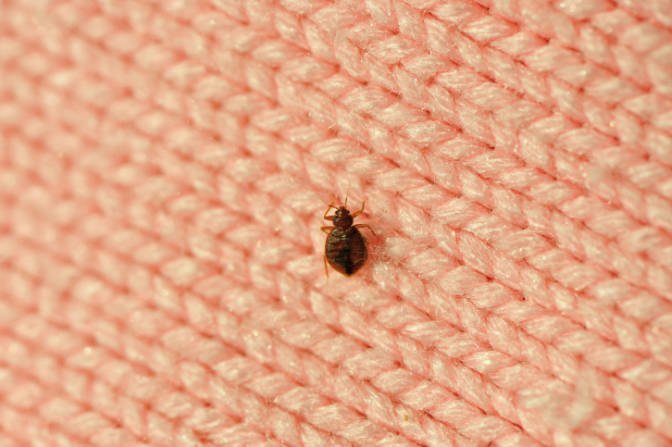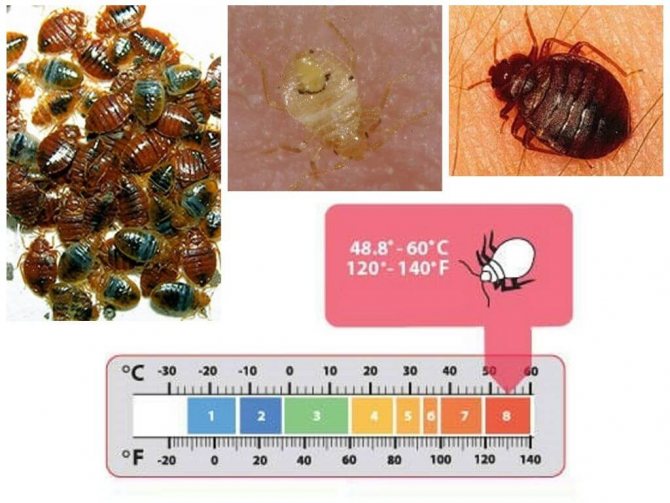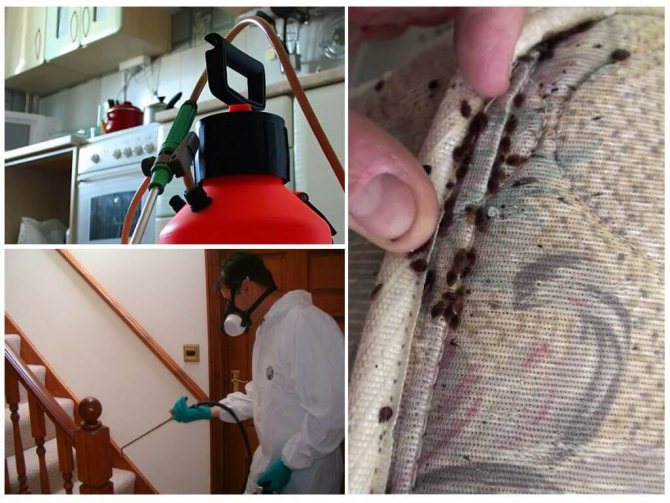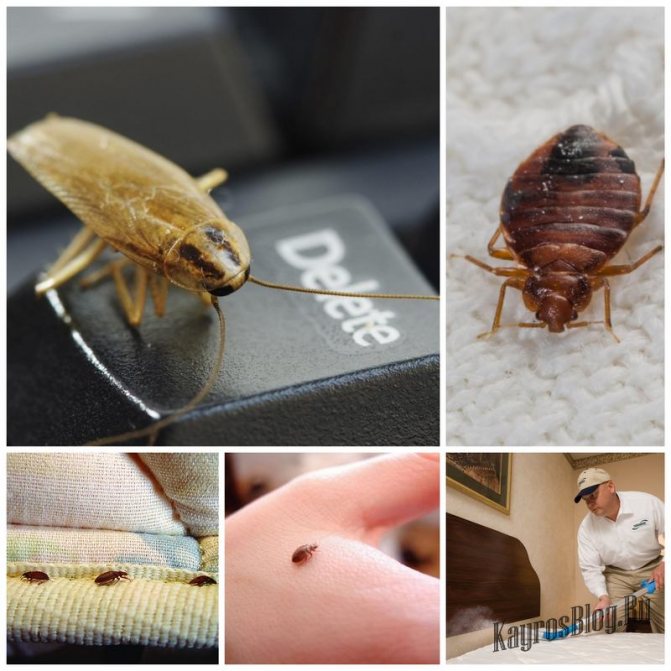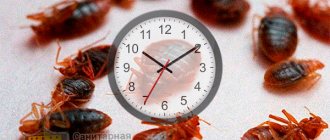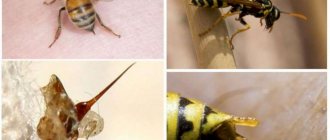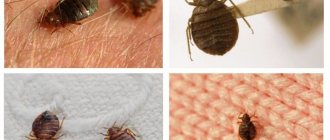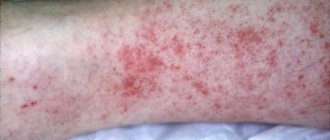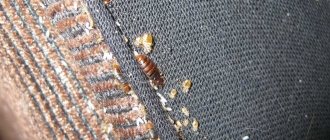- By Vil Malinoshevsky
- Destruction of bedbugs
The situation when bedbugs remained in the room after treatment, and even more so continue to bite, is, in principle, normal and can arise for several reasons. Accordingly, these reasons need to take certain measures, but even before that, these reasons need to be clarified. What are the options here?
- The agent still finishes off bedbugs, they continue to die for several days. This is normal. It happens that they die even during processing, and then they are not visible at all, but it happens that they completely die out within 3-4 days. In this case, they can move around the room, their behavior can be very unusual, they can be found in atypical places for them. But one way or another, they are dying out;
- The bugs were poisoned, but after a few days, nymphs emerged from the eggs that could survive the treatment. This is also a normal situation. It is connected with the fact that no insecticidal agent provides complete destruction of eggs. If there were a lot of parasites in the room, they laid a lot of eggs at the time of the persecution, then after disinfection it is possible to destroy the active stages themselves - adults and nymphs, and some of the eggs survive. After a few days, larvae hatch from these eggs, which begin to bite people. It seems that the bugs remained in the room, despite the persecution;
- The treatment did not succeed in destroying all the bugs. There may be several reasons - poor, unprofessional surface disinfestation, a drug to which these insects have resistance, a highly diluted drug, too many bedbugs in the apartment and the poor condition of the room itself, when it is physically impossible to treat all the bedbug hideouts with poison;
- Bedbugs re-entered the room after complete destruction and a completely effective pest control procedure;
- A person develops a phobia when it seems to him that there are bugs in the room and they bite him. We had such cases, we several times went to a call to a person who has neither parasites nor bites, but who is afraid to sleep, believing that insects will crawl over him at night and bite him. For a person, this situation looks as if the bugs did not disappear after pest control.
The main problem is to find out for which of these reasons the bugs were found in the room in each case. Moreover, there may be several of these reasons in one apartment. To do this, we need to get as much information as possible about the apartment itself, to do a little research.
How do we usually do it?
First of all, we ask the client about all the details and study the situation itself. Here you need to consider the following criteria:
- The time after processing, during which they did not die;
- The behavior and appearance of the bugs themselves;
- Condition of the room.
You need to start with the simplest and most unambiguous.
The term of death of bedbugs
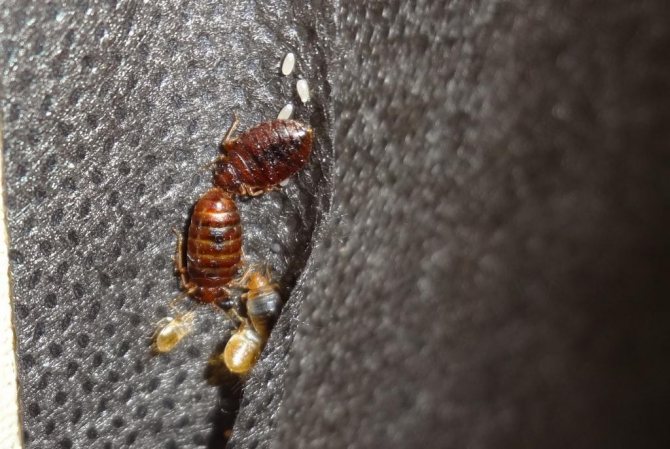
The time of death depends on various conditions
Answer unequivocally to the question "How long after treatment do the bugs die?" it is difficult even for specialists, since the timing depends on many factors - the chemical used, the amount of substance that got inside the insect, the presence or absence of immunity to a particular poison and other nuances.
The poison used by pest controllers can affect the respiratory tract, digestion, and the insect's nervous system. The time of death also changes depending on the amount of poison with which there was contact. How many bugs live after disinfection?
The fastest (within 10-30 minutes) dies are individuals directly exposed to the poison. You can find out how long the bugs will die after being treated with cold fog or hot fog, from a specialist. This usually takes several minutes: the insects begin to run out, behave fussily, and then die.
If the bugs avoid direct contact with the chemical in the first minutes, the substance settles on the floor and lasts for 2-4 weeks. Insects run over it and transfer some amount on their paws to burrows. The residual effect is directed at barely hatched nymphs: the latter are still too small and weak, and therefore die from a small amount of poison. Thus, the colony does not lay eggs or reproduce.
Important! When using folk remedies, bedbugs do not die, but only go away from an unpleasant odor or uncomfortable temperature, that is, they can return.
Remedies for bedbugs
We have already repeatedly transferred funds for the destruction of bedbugs, which can be bought in our country. A simple example - "Klopomor" - a relatively inexpensive drug that has a lot of positive reviews. Of course, it also has disadvantages. This is a small radius of action, no effect on the clutch of eggs of bloodsuckers.
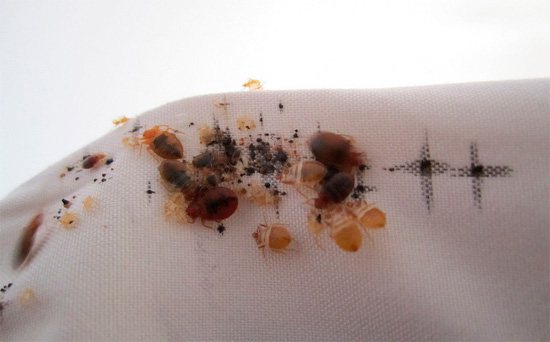

With self-pest control, it is permissible to use:
- Sprays selected for ease of handling, convenient packaging, speed of action. You can quickly walk around all corners of the apartment, spraying the drug at a short distance from the surface (20-30 centimeters). After 2 weeks, repeat the procedure - in this way you will kill the insects that were in the egg during the previous event;
- Poison solutions used to treat surfaces;
- Powders - only if they are able to install them on the approaches to the bed. An example is to put the legs of the bed in small containers with poison. Use it in small quantities, as it spreads easily through the air. Beware if children, pets live with you;
- Boiling water, steam. Watch out for burns and be careful with upholstered furniture and electronics. Otherwise, water heated to such a state shows itself as an excellent tool that does not give the insect a chance of survival. The easiest way is with bed linen, clothes - washing in hot water will destroy the parasite;
- Freezing rooms (separately - linen hung out on the street, furniture displayed on the balcony). A temperature of -15 degrees will exterminate most of the uninvited guests in minutes.
Folk wisdom offers its own methods of how to get rid of bedbugs from an apartment. It is worth paying attention to the collected leaves of wormwood, potash, a solution of water with kerosene, vinegar. A strong (and unpleasant) odor drives away living creatures, but rather serves as a temporary measure or method of prevention. It is ineffective if you constantly live in the house.
Life span after pest control
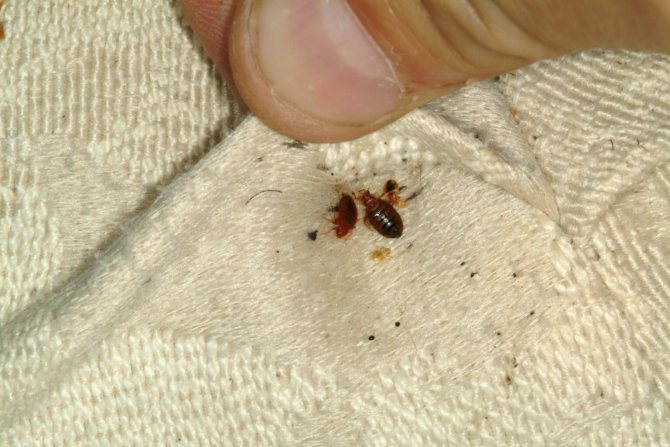

You can find dead insects throughout the apartment.
The average lifespan of a bed bug is a year, some individuals can live up to 4 months. Without food or under unfavorable conditions, they are able to hibernate.
Upon contact with poison, the life of the pest is noticeably reduced, but it is difficult to know exactly how long the bugs live after treatment with chemical poison. How many days after disinfestation do bugs disappear?
- They can die within the first half hour if treated directly;
- Mass death of adult insects usually occurs after a few days (on average, after 3-4 days). During this period, the parasites panic, chaotically run around the apartment, they cannot stay in place, they can enter unusual places (the kitchen, the bathroom), having traveled a long way.These individuals did not fall into the epicenter of the persecution, they received a lethal dose while moving along the poisoned floor;
- Young parasites die within 14 days: during this time, larvae hatch from the eggs, come into contact with the poison and die;
- When using microcapsule preparations, the period increases to a month. These funds are distinguished by a longer activity: unlike many other substances, they work for six months.
If, after processing the apartment, the insects have calmed down, and after a few days new bites have appeared, you should wait 2-3 weeks. It is possible that in a few days the remaining individuals will die completely.
However, you shouldn't wait more than a month. If bites still appear 30 days after disinfection of bedbugs, it is worth contacting the exterminators again.
About the vitality of pests
It is the ability to adapt to external factors that allows bedbugs to have high survivability. And that is why it is so difficult to destroy them completely. The situation when they disappear on their own is simply impossible: you need to make some effort for this.
If we turn to the facts of the existence of these pests, they are as follows:
- Bedbugs easily move around the apartment, so they quickly find people in any corner of it.
- If they have nothing to eat, they are able to fall into suspended animation, remaining viable for up to one and a half years. Then they can wake up and cause people a lot of trouble.
- The life activity of bedbugs slows down when exposed to low temperatures.
- They multiply very quickly.
- The viability of eggs is maintained for fourteen to twenty days, even after high-quality processing of the premises, aimed at destroying bedbugs.
By assessing these factors of viability, it is easy to understand why certain insects and their clutches are not destroyed immediately after treatment.
⊕ An important point: the destruction of bedbugs using folk recipes using vinegar, kerosene and various tinctures does not work, this will not reduce the number of insects.
Do I need reprocessing
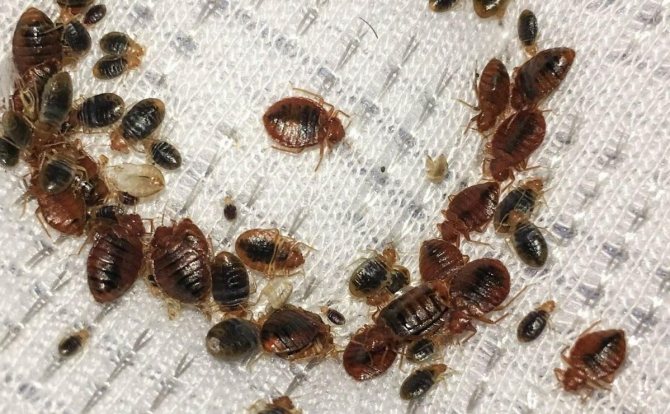

After disinfestation, bedbugs die within a month.
Why don't bed bugs die after treatment? Unfortunately, bugs are extremely tenacious and adapt perfectly to poisons - the survival rate after etching can be up to 95%, and both adult parasites and eggs survive. If the bugs continue to bite or have been noticed, it is necessary to re-treat the insects, but with a different poison that will kill more effectively.
The surviving bedbugs develop immunity against the chemical poison, which is passed on to their offspring.
If disinfection with chemicals did not help, you should re-contact the specialists, specifying that the specific poison did not work. The service will apply another poison, from which immunity has not yet appeared.
Important! Some experts recommend 10-14 days after the first treatment of the premises to fix the result with a second procedure.
Situation 4: bedbugs appeared after a long period of absence
Finally, the last situation: after the treatment, the bugs disappeared, and after two to three to six months, a year later they appeared again. Here, almost certainly, there is no connection with the processing, and the parasites appeared after re-introduction.
In this case, you must first try to find out how they got into the room - perhaps guests came to visit you with large bags that could contain parasites, whether you bought used furniture at Avito or from friends that could be contaminated, could the bugs get from the neighbors. This is necessary because if the neighbors have bedbugs, you can negotiate with them and carry out the processing together. Then the parasites will die in both apartments and will not be able to migrate to a clean one from the one where they survived.
In any case, after such a re-infection, it is necessary to carry out a full-fledged pest control.The owner of the premises is required to call the exterminators, having previously tried to find out how the bugs re-entered the apartment.
There is such a nuance: we indicate in the memo for clients that it makes sense to carry out some serious repair work in the room no earlier than 3 weeks after processing. There is a risk that the bugs will remain in the room, and people will hurry up and, 3 days after treatment, they will cover the parquet with linoleum or re-glue the wallpaper. And then it will be much more difficult to get the surviving parasites from the shelters during the reprocessing.
The situation when a person develops an obsession about the presence of bedbugs in the room is no longer solved by the pest control service and not the SES. This is the sphere of activity of psychiatrists, although we also have to face the problem itself.
In any case, there is no single universal answer to the question of why the bugs remained after treatment. Each case is different, and bugs can survive indoors for various reasons. Here you need to look at the premises, find out the circumstances of the infection, assess the current situation, study the history of the premises. Then you can more or less reliably understand the reasons for this situation and take effective measures.
Of course, if the bugs have survived in the room after treatment, it is better to find out the reasons for this situation and take measures with a professional exterminator. If the bugs remain after processing due to the negligence of the previous handler, then look for another service. If the reason is not in the processor, then try to solve the problem with the same specialist who performed the initial sanitization.
Be that as it may, you can call us or request a call back and explain the situation. We will already try to find out all the details and show you how to proceed in order to surely get rid of bedbugs forever.
Repeated disinsection
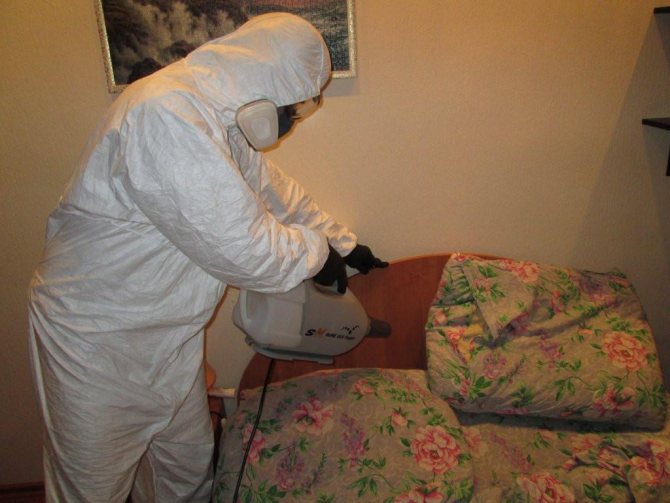

Repeated disinsection practically does not differ from the first treatment
Like primary disinfection treatment, secondary disinfection takes place in several stages. It is better to do it for professionals:
- The specialist assesses the level of infection, determines the most dangerous places;
- The apartment is being prepared: food and personal belongings are removed, furniture is moved to the center, passages to the walls and corners are cleared, as well as to all places where bedbugs were encountered;
- Choose a suitable remedy: since one poison has already been used, it is necessary to apply another;
- Residents with a child or pets leave for the duration of the treatment, after which the exterminator tightly closes the windows and doors and begins to disinfect;
- After a set time (at least 3 hours), you can ventilate the room and start cleaning with disinfection.
Important! Within a few days, you will need to carefully clean the room: the bugs will crawl out and die. It is necessary to throw away both dead and semi-living insects. When using a vacuum cleaner, you will need to regularly shake it out and take out the debris.
What happens at the end of pest control
To understand whether pest control was successful, observe the behavior of insects. They usually die within one or three days, sometimes within a week. Those that have not yet died move slowly around the room, and gradually die too.
In order for bedbug eggs to die during processing, it is important to choose the right means and method of disinfestation. Any substances have a less strong effect on embryos, so often young individuals are born. And then they actively scatter around the room, looking for food.
When is it necessary to repeat
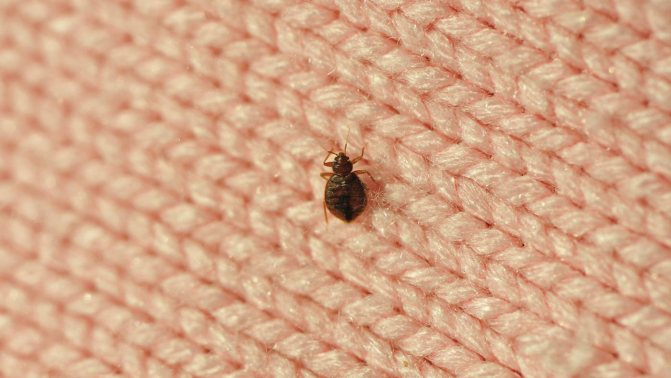

Sometimes people continue to see bedbugs, although they died long ago.
If the bugs reappear after disinfestation, repeated chemical treatment will be required. It is necessary in the following cases:
- The bugs continue to bite, they could not be killed the first time;
- The habitat has changed, but the insects have not gone far: for example, they have moved from the bedroom to the nursery;
- Not all insects died the first time. This may be due to the failure to follow the recommendations of the exterminators, poor preparation before the procedure (for example, the specialist could not get to the corner where the surviving individuals had accumulated), too strong infection of the room, quickly cleaning the house (the poison did not have time to act);
- The apartment was re-infected - new individuals made their way into the apartment;
- A psychological factor is also often encountered: the bugs are gone, but it seems to residents that they stayed and continue to bite. This creates the illusion that the pests are not completely eradicated.
Bed bugs are extremely tenacious parasites that easily adapt to the action of chemical poison. If after disinfestation there are still live bugs, you will have to call the sanitation specialists again. At the same time, they must treat the room with another poison, from which insects do not yet have immunity.
Rats and mice
This should not happen, since in our work we use only drugs with a mummifying effect - this is when only the shell remains of the pests, or drugs that contain a special substance that increases their pressure and lack of oxygen, from which rodents tend to run out of the room into the air and already perish on the street.
We suggest that you familiarize yourself with the Smoke Bomb from bedbugs - reviews and where to buy
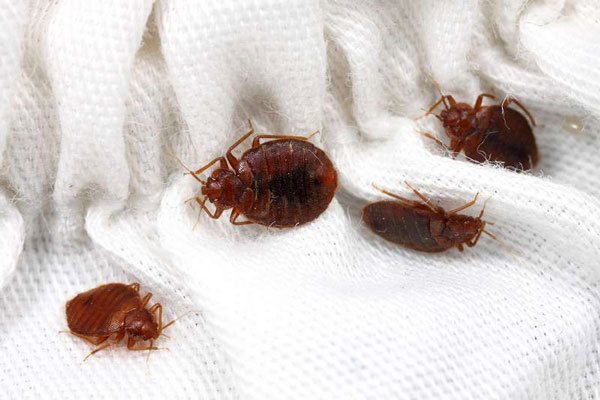

Do not worry! All baits are laid out in places that are as inaccessible to pets as possible. In addition, the certified preparations used include a special substance that tastes unbearably bitter (rodents have no taste buds), so pets cannot swallow it.
Killing rats killing mice
Cockroaches
Any SES service cannot vouch for the impossibility of the appearance of cockroaches in the future, since it directly depends on you and on objective factors (sanitary conditions in the room, the presence of cockroaches in neighbors in the house, etc.)
Only their destruction can be guaranteed. And our Service copes with this.
But we always go to meet our clients and in the event of a recurring problem, only consumables are paid, leaving and the work of a specialist is free.
Not cheaper! This is a simple and, unfortunately, common marketing ploy. Remember - cheap is not good!
Considering the current cost of consumables and the harmful work of a specialist - less than 2,000 rubles. treatment for cockroaches cannot cost! Most likely you will be promoted on the spot: “… let's add this and that, here is a stronger drug, but more expensive…” and so on. And clients often succumb to such deception.
Bingo, and you fell for the scammers! This is a banal divorce. Checkers are designed to scare away flying insects (mosquitoes, moths, flies) and nothing more! This has no effect on cockroaches and even more so bedbugs. Setting fire to putting a checker in your apartment is both cheap and no labor costs - no need to walk around with equipment, move furniture, turn beds, etc. You can just as well burn incense sticks - and save money and save yourself from a long-lasting suffocating smell.
Ideally, if such disadvantaged neighbors are ready for dialogue and joint fight against parasites. In practice, this is not always possible, so at least secure your home and carry out the processing. If you don't make any effort, cockroaches will breed very quickly. Additional protection will be "barrier treatment" with the addition of a special microencapsulated agent for, which will serve as additional prevention of the reappearance of insects
In fact, the number of cockroaches in a treated apartment cannot increase in any way, just the poison that has penetrated into all secluded places hit the cockroaches that did not catch your eye.After processing, not all poisoned cockroaches die immediately, but for some time they continue to go crazy - the cockroaches' instincts are suppressed, so they run out to the surface and behave fearlessly. Many people mistake this effect for an increase in the number of cockroaches.
Extermination of cockroaches
Not all residences found
Having arrived at the house, bedbugs choose the most suitable habitat for them. Most often, they settle closer to the food source - in a person's bed. Mattresses, the space between the mattress and the bed, crevices in sofas, old pillows are perfect for them. It is here that they will be able to constantly eat and feel safe. In addition, in the bedrooms, the required temperature regime is usually observed from +15 to +30 degrees.
However, quite often the owners forget that bedbugs can settle in other places. Because of this, the processing is carried out poorly, and the bugs only partially die out.
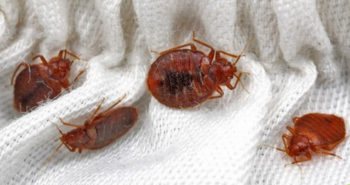

In addition to the bedroom, bugs can settle:
- behind skirting boards and under linoleum;
- under carpets;
- behind furniture;
- in wardrobes;
- on bookshelves between books;
- behind wall paintings;
- in dressers;
- under the windowsills, closer to the heating radiators;
- under the upholstery of upholstered furniture.
In recent years, bed bugs have been multiplying at a tremendous rate all over the world. For example, in Zurich, bugs live in every second apartment, and in Florida, the population of these parasites has increased 10 times over the past ten years.
Temperature effect
The cooler it is in the room, the longer the bugs live. This is due to the fact that during the heating or heat period, they need more blood for active life and reproduction. They often go out to feed, metabolic processes are accelerated. At elevated temperatures, the larvae also develop faster:
- at 20 degrees - the transition from larva to imago can last up to 2-3 months;
- at 30 - the transition will take place within a month.
High temperature conditions deal with adult bugs and larvae quickly enough. Here's how many degrees the bugs will not survive:
- 50 degrees - adults die;
- above 55, larvae die;
- from -20 and below - from a few minutes to a day;
- from -20 to -24 degrees for a short time - the larvae can survive.
No matter how long an adult insect dies from cold or heat, the eggs of bedbugs withstand even longer: they survive at 60 and minus 30. Since it is almost impossible to create such modes in an apartment, therefore it is necessary to use pest control by professional methods.

